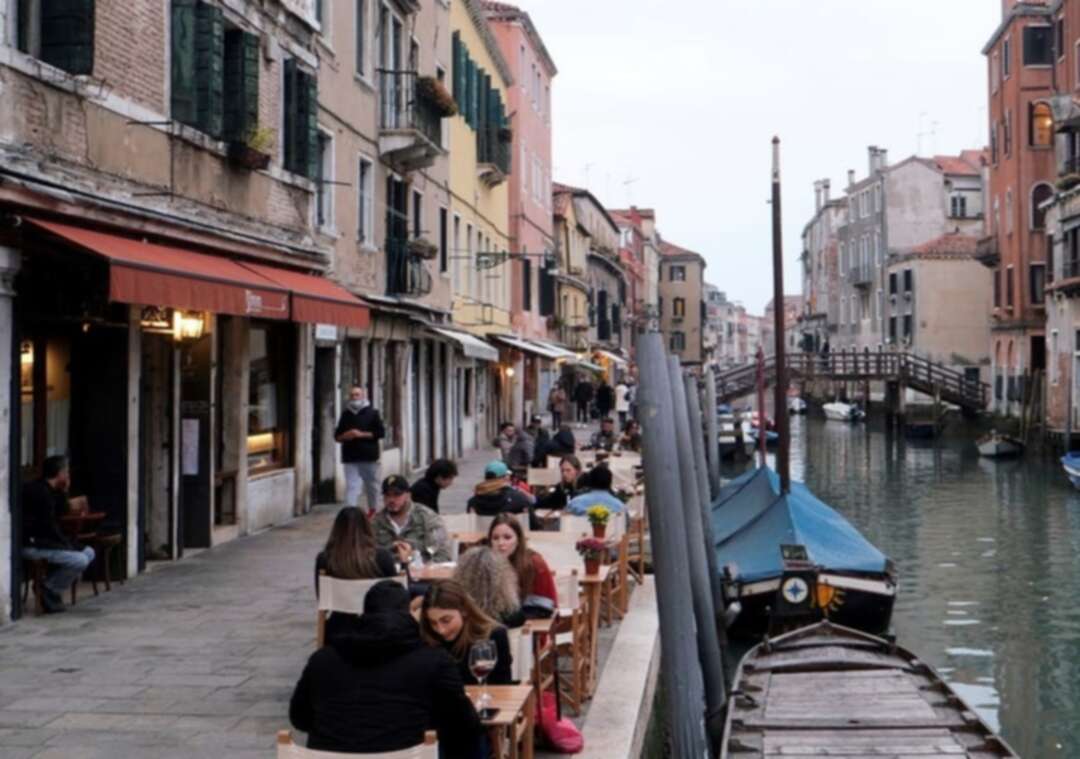-
Italian doctors remember the night that ushered in Europe’s first COVID-19 lockdown

A year ago, Laura Ricevuti and Annalisa Malara, both doctors at Codogno hospital in Italy, had a hunch that something was different about a patient in the intensive care ward.
Their decision to take matters into their own hands wound up triggering a national emergency - they had identified the first case of COVID-19 in the area that would become Europe’s first lockdown zone.
A previously healthy 38-year-old man, now known as Mattia, his first name, or “patient one”, had gone to the hospital with a high fever, cough and shortness of breath on February 18, 2020. He refused to be admitted so was given antibiotics and went home.
He returned that evening in worse shape and was put on oxygen. Two days later, Mattia’s wife told doctors that a few weeks earlier he had gone to dinner with a colleague who had been in China.
But Mattia did not fit national criteria for mandatory coronavirus testing because he had not been in China personally.
“I had to explain many times why I wanted to perform it (a COVID swab) anyway,” said Malara, 39.
“Doctor Malara and myself decided to break protocol,” Ricevuti recalled. They performed the nasal swab and sent it to a lab in Milan.
At 9:30 p.m. the phone rang. The test was positive.
“We couldn’t believe it. We thought this was a far away problem that had to do with China, but it was already here with us, and not just from that February 20th but probably from much earlier,” Ricevuti, 44, said.
In the days that followed, Codogno, a town of 15,000 residents, became the “capital” of the first “red zone” in Europe to be locked down.
 A medical worker visit the home of a patient suspected to be suffering from the coronavirus disease to carry out a swab test, Rome, Italy, December 3, 2020. (Reuters/Remo Casilli)
A medical worker visit the home of a patient suspected to be suffering from the coronavirus disease to carry out a swab test, Rome, Italy, December 3, 2020. (Reuters/Remo Casilli)“In the beginning I hoped - we all hoped - that the virus would be limited to a few people,” said Malara. “But after a few hours a lot of people came to the emergency room with the same symptoms and after a few days it was clear that it had spread into the population.”
Since then 95,000 people have died of COVID-19 in Italy, the second-highest toll in Europe after Britain and the seventh-highest in the world.
Both women are still treating COVID-19 patients.
“This is our mission. We cannot really retreat,” Ricevuti said. “Day-by-day we go forward, facing the difficulties and the changes that life presents us... you need a lot of physical and mental strength.”
source: Reuters
Image source: Reuters
Levant
You May Also Like
Popular Posts
Caricature
BENEFIT Sponsors BuildHer...
- April 23, 2025
BENEFIT, the Kingdom’s innovator and leading company in Fintech and electronic financial transactions service, has sponsored the BuildHer CityHack 2025 Hackathon, a two-day event spearheaded by the College of Engineering and Technology at the Royal University for Women (RUW).
Aimed at secondary school students, the event brought together a distinguished group of academic professionals and technology experts to mentor and inspire young participants.
More than 100 high school students from across the Kingdom of Bahrain took part in the hackathon, which featured an intensive programme of training workshops and hands-on sessions. These activities were tailored to enhance participants’ critical thinking, collaborative problem-solving, and team-building capabilities, while also encouraging the development of practical and sustainable solutions to contemporary challenges using modern technological tools.
BENEFIT’s Chief Executive Mr. Abdulwahed AlJanahi, commented: “Our support for this educational hackathon reflects our long-term strategic vision to nurture the talents of emerging national youth and empower the next generation of accomplished female leaders in technology. By fostering creativity and innovation, we aim to contribute meaningfully to Bahrain’s comprehensive development goals and align with the aspirations outlined in the Kingdom’s Vision 2030—an ambition in which BENEFIT plays a central role.”
Professor Riyadh Yousif Hamzah, President of the Royal University for Women, commented: “This initiative reflects our commitment to advancing women in STEM fields. We're cultivating a generation of creative, solution-driven female leaders who will drive national development. Our partnership with BENEFIT exemplifies the powerful synergy between academia and private sector in supporting educational innovation.”
Hanan Abdulla Hasan, Senior Manager, PR & Communication at BENEFIT, said: “We are honoured to collaborate with RUW in supporting this remarkable technology-focused event. It highlights our commitment to social responsibility, and our ongoing efforts to enhance the digital and innovation capabilities of young Bahraini women and foster their ability to harness technological tools in the service of a smarter, more sustainable future.”
For his part, Dr. Humam ElAgha, Acting Dean of the College of Engineering and Technology at the University, said: “BuildHer CityHack 2025 embodies our hands-on approach to education. By tackling real-world problems through creative thinking and sustainable solutions, we're preparing women to thrive in the knowledge economy – a cornerstone of the University's vision.”
opinion
Report
ads
Newsletter
Subscribe to our mailing list to get the new updates!






















